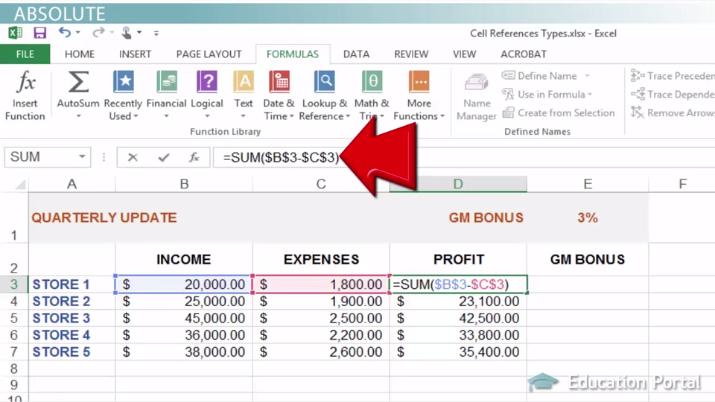Sure! Here’s a 50-word introduction for your Geek blog article on “Excel Fix Cell in Formula”:
Unlock the Power of Excel: Learn how to fix cells in formulas and take your spreadsheet skills to the next level. Whether you’re a beginner or an advanced user, understanding this essential Excel feature will save you time and frustration. Explore tips, tricks, and real-life examples in this comprehensive guide.
Mastering Excel: Unlocking the Power of Fixing Cell References in Formulas
Mastering Excel: Unlocking the Power of Fixing Cell References in Formulas
When it comes to using formulas in Excel, one of the most important concepts to grasp is fixing cell references. By default, when you copy and paste a formula to other cells, Excel adjusts the cell references accordingly. However, there are instances where you want to keep a reference constant, regardless of where the formula is copied to.
Fixing a cell reference can be achieved by using the dollar sign ($) in front of the column and/or row reference. For example, instead of referencing cell A1 as “A1”, you would reference it as “$A$1”. When you copy this formula to other cells, the reference will remain unchanged.
This technique provides immense power when working with large datasets and complex formulas. It allows you to anchor specific cells or ranges, ensuring that the formula always refers to the intended data.
Another scenario where fixing cell references becomes crucial is when you want to apply conditional formatting based on a fixed range. By locking the reference, you can easily format cells based on a single range while copying the formatting to other cells.
In addition, fixing cell references is essential when creating dynamic named ranges. Named ranges help simplify formulas and make them more readable. By fixing the reference, you can ensure that the named range always points to the correct data, regardless of where the formula is used.
In summary, mastering the art of fixing cell references in Excel formulas is a fundamental skill for anyone working with large datasets and complex calculations. It empowers you to control how formulas behave when copied to different cells, ensuring accuracy and consistency in your analysis.
Frequent Questions
Why should I fix a cell in a formula in Excel?
You should fix a cell in a formula in Excel using $ symbols to prevent it from changing when the formula is copied or dragged across cells. This is important for maintaining accuracy and consistency in calculations.
How do I fix a specific cell reference in a formula in Excel?
To fix a specific cell reference in a formula in Excel, use the dollar sign ($) before the column letter and row number. For example, to fix the cell reference A1 in a formula, write $A$1. This will prevent the reference from changing when you copy or fill the formula to other cells.
Can I fix multiple cells in a formula in Excel?
Yes, you can fix multiple cells in a formula in Excel by using absolute cell references.
In conclusion, mastering the art of Excel’s fix cell in formula is an essential skill for anyone working with data and technology. By understanding how to lock cells within formulas using the $ symbol, users can ensure the accuracy and stability of their calculations, especially when dealing with large data sets or complex formulas. This feature empowers professionals to create dynamic and flexible spreadsheets that can adapt to changes without compromising accuracy. With a solid grasp on this technique, individuals can enhance their productivity and efficiency in leveraging Excel as a powerful tool for data analysis, reporting, and decision-making. So, don’t underestimate the power of mastering fixing cell references in Excel – it’s a game-changer in the world of technology-driven data management.



